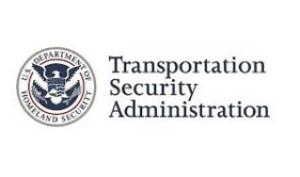
The Transportation Security Administration (TSA) announced its TSA PreCheck® Trusted Traveler program surpassed 20 million active members, setting a new record for the program that launched in December 2013. This brings the total number of vetted airline passengers for DHS Trusted Traveler programs, which includes U.S. Customs and Border Protection’s Global Entry expedited screening, to over 40 million.
“More travelers than ever are using TSA PreCheck because of its value, ease and efficiency,” said TSA Administrator David Pekoske. “TSA PreCheck continues to be one of our most innovative risk-based security solutions, providing the benefit of shorter wait times of under 10 minutes, greater checkpoint efficiency and improved security. Additionally, the cost of TSA PreCheck continues to go down for both new enrollments and renewals. The consistent growth of the TSA PreCheck program is a testament to its popularity and success.”
TSA PreCheck enables low-risk travelers to enjoy a secure and efficient screening experience at more than 200 airports without compromising security standards. TSA’s wait time benchmarks for TSA PreCheck lanes are under 10 minutes and under 30 minutes for standard lanes. TSA PreCheck members are able to wear their shoes, belts and light jackets through screening, and they may keep their laptops and 3-1-1 liquids in their carry-on bags.
TSA PreCheck is available for eligible travelers when departing from a participating airport or when connecting on domestic flights after returning to the U.S. from an international airport. Travelers who are U.S. citizens, U.S. nationals or U.S. lawful permanent residents may apply for TSA PreCheck and are able to pick any enrollment provider based on cost, location and additional benefits. Costs for enrollment vary by provider.
Enrolling or renewing in the TSA PreCheck program is easy:
- Step 1: Visit tsa.gov/precheck to begin your enrollment and choose one of TSA’s authorized enrollment providers starting as low as $77.95 for a five-year membership: CLEAR, IDEMIA or Telos.
- Step 2: Submit the online application in as little as five minutes.
- Step 3: For new enrollees, visit a nearby enrollment location to complete enrollment in 10 minutes with your chosen provider. This process includes fingerprinting, document and photo capture, and payment. Once approved, most enrollees will receive a unique Known Traveler Number (KTN) within three to five days, which must be added to their airline reservation to make them eligible to use TSA PreCheck lanes. The TSA PreCheck indicator (such as TSA PRECHK or TSA Pre✓®) must be on their boarding pass before approaching a TSA checkpoint to confirm they are eligible for TSA PreCheck screening.
TSA PreCheck members may renew membership online up to six months prior to expiration for another five-year term starting as low as $68.95.
Be aware: Any website that claims to allow consumers to register for TSA PreCheck that does not end in “.gov” is not an official TSA PreCheck website. Individuals who are applying for TSA PreCheck for the first time cannot pay the application fee online; they must complete their application and pay in-person at a TSA enrollment center. First-time applicants are not asked to provide payment information online.
Teenagers, aged 13-17, may accompany TSA PreCheck enrolled parents or guardians through TSA PreCheck screening lanes when traveling on the same airline reservation and when the TSA PreCheck indicator appears on the teen’s boarding pass. Children 12 and under may accompany an enrolled parent or guardian in the TSA PreCheck lanes without restriction.
AskTSA is available for travelers needing live assistance from 8 a.m. until 6 p.m. ET via X, Facebook (by messaging @AskTSA) or by sending a text to “275-872” (“AskTSA”). Travelers may also reach the TSA Contact Center at 866-289-9673 from 8 a.m. to 11 p.m. ET on weekdays and 9 a.m. to 8 p.m. ET on weekends/holidays. An automated service is available 24/7.
Transportation Security Administration was created to strengthen the security of the nation's transportation systems and ensure the freedom of movement for people and commerce. TSA uses a risk-based strategy and works closely with transportation, law enforcement and intelligence communities to set the standard for excellence in transportation security.
For more information about TSA, please visit our website at tsa.gov.
